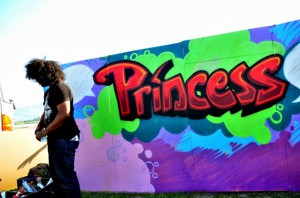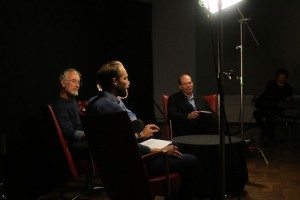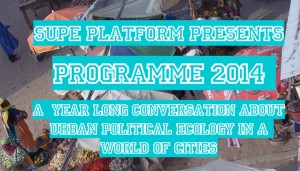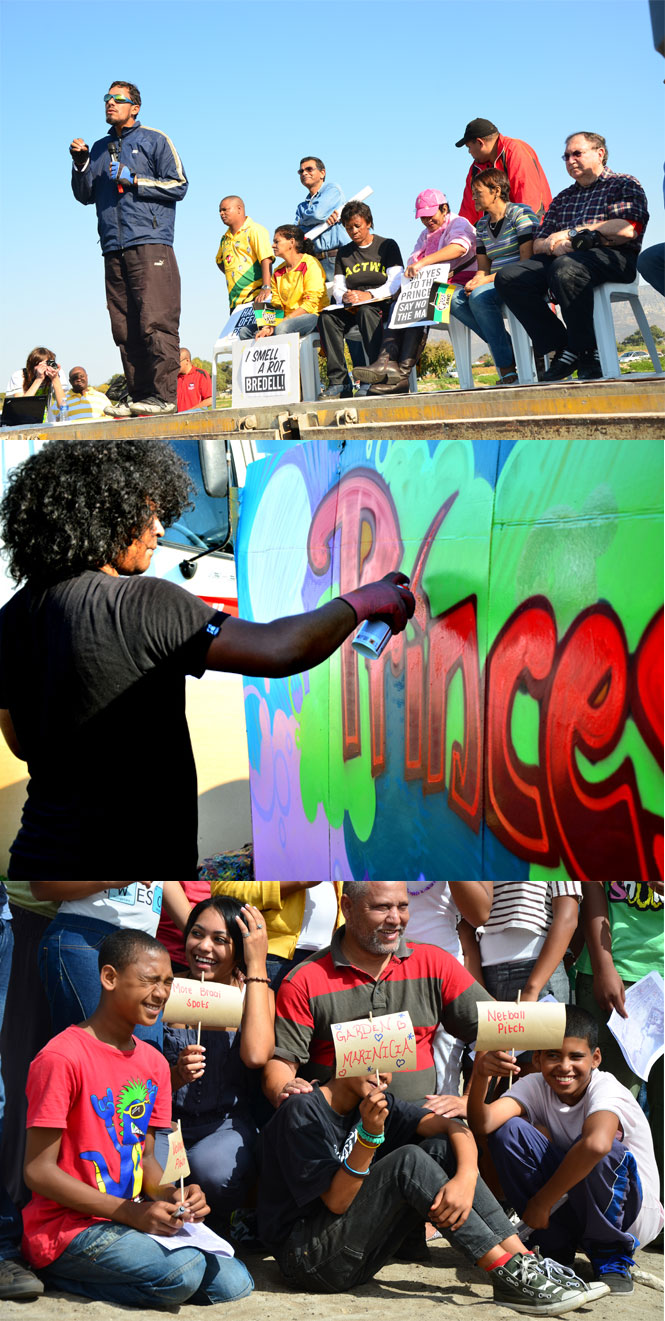Ways of Knowing Urban Ecologies (WOK-UE; 2011-2016)
Short Notes After a Project is Finished
The Ways of Knowing Urban Ecologies project started in 2011 and finished in December 2016. Below follows the final report I submitted to the funder Formas and some additional notes. The project became an amazing learning space for me as Principal Investigator for my first research project, and highly productive for especially other younger scholars and students that have been involved.
Looking beyond peer-reviewed publications
The Ways of Knowing Urban Ecologies Project has been incredibly productive as can be witnessed by its publication list. This includes one PhD thesis, an upcoming edited volume with MIT Press, and a row of high-calibre theoretical and empirical contributions in top-journals based on extensive empirical work in Cape Town and Stockholm, including New Orleans (the latter mainly through the associated MOVE project). To this, the core WOK-UE team—Jane Battersby, Marnie Graham, Anna Storm, Joshua Lewis, Mary Lawhon and Sverker Sörlin—also made regular contributions to wider popular science and media platforms. 
The WOK-UE project has also created a lot of activities that are not mentioned in the short final report that I submitted to the Swedish funder Formas. In this post I would like to take the opportunity to list some of those activities since it shows how research projects can be viewed as venues to build new collaborations, projects and constellations beyond the empirical research and peer-reviewed publication. In this list, I also mention key collaborators who have been more than instrumental in developing the following three main activity streams now associated with WOK-UE:
- (A) The building of The Situated Ecologies Platform, a highly interdisciplinary and transdisciplinary platform to explore urban ecology that included:
- The development of two major reserach film projects, One Table Two Elephants (upcoming in 2018), and Moving Closer to Nature with film-maker and researcher Jacob von Heland, which in turn has lead to the development of a newly funded project on Visual Environmental Humanities (that funds two new research films).

- Explorations at the borderland between design, art and ecology in Tactical Symbiotics with designer Martín Ávila (aligned to his postdoctoral project).
- The development of the ACC Annual Seminar and PhD Course on Democratic Practices of Unequal Geographies, with political philosopher Andrés Henao Castro that over three years have explored the intersection of political theory, global South urbanism and urban ecologies/geographies.
- The organizing of the academic workshop on Radical Incrementalism and Theories/Practices of Emancipatory Change with critical geographer Jonathan Silver.
- The use of hip-hop and theatre practices to situate stories of Cape Flats in the play STOMPIE in Cape Town together with Emile Jansen/Mixed Mense and theatre director Kent Ekberg.
- The partial funding of organizing the conference Urban Beyond Measure at Stanford University with critical geographer and urban planner Jia-Ching Chen.
- The provision of funds for the development and eventual funding of major research grants on food security at the African Centre for Cities by Jane Battersby.

- The development of two major reserach film projects, One Table Two Elephants (upcoming in 2018), and Moving Closer to Nature with film-maker and researcher Jacob von Heland, which in turn has lead to the development of a newly funded project on Visual Environmental Humanities (that funds two new research films).
- (B) The support and early development of the Situated Urban Political Ecologies Collective, including:
- The work with SUPE-core publications in Antipode and Regional Studies with Jonathan Silver, Mary Lawhon, and James Duminy.
- Complementary funding of the SUPE Africa-focused week-long workshop in Pretoria with younger scholars with Jonathan Silver, Mary Lawhon and Joe Pierce (with support from the Antipode Foundation).
- The support for SUPE members to give conference presentations and organize special sessions at the conferences of Dimensions of Political Ecology (DOPE) and Association of American Geographers (AAG).
- Support towards the development of new research projects that have now been funded, including NOTRUC, TLR Waste, and HICCUP with several already mentioned scholars, alongside Suraya Scheba and Koni Benson (funded partially by WOK-UE), and Erik Swyngedouw, Nate Millington and PhD students Kathleen Stokes and Anesu Makina (funded through the new projects).
- And the development of this website, the recently released website for The Situated UPE Collective.
- (C) The writing and organizing of the Grounding Urban Natures edited book volume (Ernstson & Sörlin), including two workshops in Cape Town and Stockholm. The book is now in review at MIT Press with 14 chapters and should come out in 2018.
(For a reflection on how projects can be used to build crucial scholarly networks, see this post here.)
Finally, it has been a lot of work as PI for the WOK-UE project, but it has also been extremely rewarding. This was my first research project as PI, and I have a lot of people to thank, some of them are mentioned above, in being able to serve (and flounder) in this role.
/Henrik Ernstson, Cape Town 18 May 2017.
Final Report to Formas for Ways of Knowing Urban Ecologies Project (2011-2016)
Institutional Partners: KTH Environmental Humanities Laboratory, KTH Royal Institute of Technology; African Centre for Cities, University of Cape Town; Stockholm Resilience Centre, Stockholm University.
Introduction
This project sought to critically examine the social, cultural and political dimensions of natural resource management (NRM) in rapidly growing urban spaces, in particular of the global South. We developed four in-depth studies in Cape Town, South Africa, a rapidly growing city shaped by its colonial and apartheid past and highly unequal, culturally diverse and grappling with resource management challenges; with one contrastive study in Stockholm.
Two ideas guided our work: First, NRM must be understood not as an objective, value-free practice but as a social practice informed by particular ways of knowing and ways of valuing urban spaces. Second, while viewed as embedded within state/city bureaucracies and shaped by colonial/modernist discourses, NRM will necessarily have to engage with alternative and vernacular ways of knowing urban nature. Our interest has been to uncover alternative ways of knowing and analyze how these put pressure on NRM to integrate, dominate, by-pass or silence such ways of knowing with a special focus of how marginalized groups tries to assert their ways of knowing. A key purpose has been to provide material for reflections on more inclusive forms of urban NRM.
Materials and methods
Our Cape Town studies lies along a gradient from poor to wealthy, from Cape Flats to Table Mountain:
1. Macassar Dunes/Wolfgat Nature Reserve, a protected coastal dune area close to informal settlements and apartheid-era townships. Departing from how protected areas and nature conservation are shaped by Western and colonial practices, we developed a postcolonial nature conservation perspective to explore how colonial legacies live on, are contested and shaped through everyday practices and co-management relations at the Macassar Dunes.
2. Phillippi Horticulture Area (PHA), a large urban agricultural space on Cape Flats under pressure for housing and industrial development. This work showed how government NRM frameworks have disconnected agricultural land from its food systems value making it difficult to protect. But also how knowledge practices of emergent black farmers, activists and sholars have embedded PHA within wider cultural, economic and food security struggles.
3. Princess Vlei, a neglected wetland on Cape Flats. Here we followed how historically marginalized so called Coloured residents mobilized to stop the building of a shopping mall by embedding the wetland and fynbos plants within memories of oppression. This undermined the authority of NRM practices of biodiversity mapping and ecosystem services that tend to separate nature from culture/history . With regards to such radically different ways of knowing urban nature, we developed a documentary film project One Table Two Elephants , also funded by Formas.
4. Cecilia Forest/Park, chosen for its contrast as this once forested area turned into a conflict between two elites; conservation biologists authorized to cut down so called alien trees, and affluent white residents who wanted to keep the trees as part of their cultural heritage/recreational space.
We also drew upon our previous studies in Stockholm and developed a study at Kymlinge in Stockholm, a 60 hectars green area surrounded by residential areas and heavy transport infrastructure, which served as a comparative study. In parallel, Joshua Lewis has developed an in-depth study in New Orleans for comparative studies with Henrik Ernstson’s work in Cape Town.
Results and discussion
NRM is an inherently conflictual and contested process. A key finding from our project is how NRM works to silence alternative ways of knowing urban spaces and urban nature, thus impoverishing how urban nature and urban ecology can be thought, engaged and managed. This is true even for quite recent frameworks such as ecosystem services, social-ecological systems theory and resilience thinking, which at the surface are open to various ways of knowing, but still have done little to integrate postcolonial critique and other knowledge critical frameworks in urban settings.
Of interest to wider discussions on global South/postcolonial urbanization, our results illustrates how colonising legacies persist at wider and institutional levels through exclusionary conservation practices, a focus on biodiversity preservation or elite heritage, and through sustained racialised relations. Nonetheless, we argue that some of the most transformative practices takes place either through urban land-use conflicts where established ways of knowing gets scrutinized and challenged (as at Princess Vlei and PHA), or through more subtle collaborative practices within ad hoc, informal, and unmanaged interactions, involving deeply interpersonal and ethically challenging situations (as at Macassar and Princess Vlei). Through these interactions, conservators, community participants, black emergent farmers and Coloured wetland activists were redefining on-the-ground what postcolonial NRM might mean. We note with our study at Tokai Forest how elites, while pushing conservative social agendas, can challenge expert discourses. Our Kymlinge study contributes comparative dimensions between North and South cities in how expert/vernacular ways of valuing space intersects.
Conclusion
Our studies in Cape Town and our theoretical work to combine postcolonial critique and environmental studies (into a Situated Urban Political Ecologies framework) affirms our conclusion that more research is needed on how discourses and practices of NRM, nature conservation, biodiversity protection and ecosystem management travels and gets accommodated in various cities and works to silence alternative ways of knowing. In large parts of NRM research/practice there is little awareness of this. This hampers the development of more sensitive and democratic ways of organizing the public management of contested urban nature values (i.e. NRM).
Publications
Ernstson H (2013) Re-translating nature in post-apartheid Cape Town. In: Actor-Network Theory for Development. Univ of Manchester
Ernstson H Situating ecologies and re-distributing expertise: The material semiotics of people and plants at Bottom Road, Cape Town (pp. 1 20) IJURR’
Ernstson H, Lawhon M & Duminy J (2014) Conceptual vectors of African Urbanism: Engaged theory-making and platforms of engagement. Regional Studies 48(9):1563 1577
Graham M & Ernstson H (2012) Comanagement at the fringes: Examining stakeholder perspectives at Macassar Dunes. Ecology and Society 17:3
Graham M (2015) Everyday human (in)securities in protected urban nature: Collaborative conservation at Macassar/Wolfgat Dunes Nature Reserves. Geoforum 64: 25-36
Graham M (2015) Postcolonial nature conservation in practice: The everyday challenges of on-ground urban nature conservation, Cape Town, South Africa. GeoJournal(Aug):1-20
Battersby J (2016) Food insecurity amongst urban households. In: Food Security in South Africa. Juta: Cape Town
Battersby J (2012) Beyond the food desert: Finding ways to speak about urban food security in South Africa. Geografiska Annaler B 94 (2):141-159
Lawhon M, Ernstson, H & Silver J (2014) Provincializing Urban Political Ecology: Towards a Situated UPE through African Urbanism. Antipode, 46(2), 497 516
Lawhon M (2014) Situated, networked environmentalisms: A case for environmental theory from the South. Geography Compass 7(2): 128-138
Lawhon M & Patel Z (2013). Local sustainability and the politics of scale. Env & Planning C 31(6):1048 1062
Storm A (2014) Industrial nature. In: Storm, A. Post-Industrial Landscape Scars Basingstoke: Palgrave Macmillan
Ernstson H & Sörlin S (2013) Ecosystem services as technology of globalization: On articulating values in urban nature. Ecological Economics, 86, 274 284
Barthel S Parker J & Ernstson H (2013) Food and Green Space in Cities. Urban Studies 1 18
Colding Ernstson H et al (2013) Urban green commons. Global Environmental Change, 23(5):1039 1051
PhD thesis: Graham, Marnie (2015) Postcolonial Nature Conservation and Collaboration in Urban Protected Areas. Stockholm University
Popular science articles (selection)
Ernstson, H. and Jacob von Heland. (2015) Documentary Film. Title: One Table Two Elephants: Ways of Knowing Urban Natures (First Cut). Sweden: Conference Contribution, Urban Beyond Measure: Registering the Urban Environments of the Global South, Stanford University, 8-9 May 2015. Funded by Formas as Information Project (2014-15). A finalized version will be ready in 2016, textad på engelska och svenska. Mer information: http://www.situatedecologies.net/archives/1562
Ernstson, H. (2012). Policy Report and Input to Civil Society Organization Princess Vlei Forum: Vlei Breathing. Vlei Living. A report on Princess Vlei as History, Ecology, and Struggle at Cape Flats (p. 20). Cape Town.
Ernstson, H. 2014. “The Political Nature of Urban Wetlands: Speaking from Princess Vlei Wetland, Cape Town.” Urban Wetlands: South Asia.
Graham, M. S. Suchet-Pearson, and H. Ernstson. 2015. Doing a Co-Tutelle PhD… What does that mean?” Thesis Whisperer, December 2.
Battersby J. and Haysom Gareth (2012-2013) Series of Op-Ed articles in Cape Town and South African newspapers on Phillippi Horticulture Area and on Urban Food Security.
Battersby J and Haysom G (2012) Short Policy Report: Philippi Horticultural Area. Cape Town: AFSUN and Rooftops Canada Abri International
Battersby J and Haysom G (2012) Long Policy Report: Philippi Horticultural Area: A City Asset Or Potential Development Node? African Food Security Urban Network, African Centre for Cities, University of Cape Town
Battersby J. and Haysom Gareth (2012) Four Page Flier: Philippi Horticultural Area (well-distributed among civil society organizations)
And several blog posts at http://www.situatedecologies.net/
Popular science description of the final report to the funder Formas in Swedish
Introduktion
Det här projektet har undersökt naturresursförvaltning (NRF) i städer och dess sociala, kulturella och politiska dimensioner. Fokus har varit på växande städer i utvecklingsvärlden, också kallat det globala Syd. För att göra det arbetade vi med fyra detaljerade studier i Kapstaden, Sydafrika, samt en komparativ studie i Stockholm. Vårt fokus på Kapstaden vilar i att det är en snabbt expanderade stad med stor ojämlikhet (från rika förorter till slumområden), hög etnisk diversitet och en stad med djupa spår av kolonialism och apartheid, samt att den brottas med en rad naturresursproblem.
Projektet har drivits av två huvudidéer: För det första, NRF kan inte ses som objektiv eller värdeneutral. Istället behöver vi se NRF som en social praktik djupt inbäddad i stadens politik och historiska relationer. För att undersöka detta har vi fokuserat på hur NRF är formad av specifika ’sätt att förstå’ och ’sätt att värdesätta’ urbana naturområden, s.k. specifika kunskapspraktiker. För det andra, dessa kunskapspraktiker, i sig formade av koloniala och moderna idér är inskrivna inom stads- och statsbyråkratier. Detta till trots, i städers ofta konfliktfyllda landskap så kommer de områden, bestämmelser, experter (ofta ekologer och biologer), byråkrater och de som arbetar som naturskyddsförvaltare inom NRF att stöta på eller möta alternativa och/eller lokala/folkliga sätt att förstå urban natur och urbana platser. Detta sätter tryck på NRF att antingen förändras och försöka integrera alternative ’sätt att förstå’, eller att försöka förbigå och t.o.m. tysta ner dessa alternativa kunskapspraktiker. Det är genom att undersöka olika gruppers kunskapspraktiker, speciellt marginaliserade grupper, som det här projektet har skapat förståelse för hur NRF är inbäddad inom sociala och politiska relationer. Projektet har skapat detaljrika studier, texter, workshops, möten och en dokumentärfilm med syfte att bidra till vidare diskussioner om hur NRF kan bli mer inklusiv, speciellt inom de växande städerna i det globala Syd.
Material och metoder
Fallstudierna i Kapstaden kommer från fattiga till rika områden, från Cape Flats till Taffelberget. De sammanfattas här med projektrelaterade result:
Macassar Dunes och Wolfgat Nature Reserve är ett strand- och sanddyndominerat naturskyddsområde i närheten av segregerade bostadsområden för svarta/färgade som byggdes under apartheid samt mer nyligen uppkomna slumområden. Vi undersökte hur naturskyddstänkade, med sitt ursprung i västvärlden och koloniala praktiker har format vad som händer idag vid Macassar Dunes. Baserat på intervjuer och deltagande observationer utvecklade vi ett s.k. postkolonialt perspektiv för att förstå hur detta koloniala arv lever vidare, hur det blir omstritt och ifrågasatt, samt förändrat genom vardagliga möten och samförvaltningsprocesser vid naturskyddsområdet.
Phillippi grönsaksodlingsområde (Phillippi Horticulture Area, PHA) är ett stort område som använts för storskalig grönsaksodling under mer än ett sekel. Nu är området hotat av industri- och bostadsexploatering. Denna studie visade hur stadens planeringsverktyg (som ska ses en viktig del av NRF) har gjort det svårt att värdesätta PHA för dess betydelse som jorbruksområde och för matsäkerhet. Studien visar dock hur svarta lantbrukare (som nyligen fått tillgång till mark), aktivister och forskare har lyckats skriva in PHA inom vidare kulturella, ekonomiska och matsäkerhetsfrågor vilket har skapat reflektion och debatt.
Princess Vlei är ett historiskt sett åsidosatt våtmarksområde på Cape Flats, den del av Kapstaden som användes av rasistiska stadsplanerare för att ‘rensa’ innerstaden från så kallade svarta och färgade “icke-Europeer” (klassifierade som “African Black”, “Coloured”, “Indian”). Här studerade vi hur historiskt marginaliserade “Coloureds” mobiliserade för att stoppa bygget av en stor köpmarknad vid våtmarken genom att sammanlänka våtmarken med minnen av förtryck från kolonisering och apartheid. Detta skapade en idé om urban natur som både politisk och historisk. Förutom att mobilisera mer stöd så visade detta också hur mer expert-orienterade metoder för att beskriva naturvärden, t.ex. biodiversitetskartor och ekosystemtjänster, kan vara djupt problematiska då de ‘tekniferar’ naturen och placerar den utanför sociala och politiska berättelser. Vi utvecklade denna fallstudie vidare genom dokumentärfilmsprojektet “Ett bord, två elefanter/One Table Two Elephants” som syftar på dessa två radikalt olika synsätt på urban natur.
Ceciliaskogen/-parken valde vi för den kontrast den erbjöd som en konflikt mellan två eliter; naturvårdsexperter som hade fått tillåtelse att hugga ner ‘alien’/främmande trädarter och rika hushåll från ett närliggande och i huvudsak vitt bostadsområende som organiserade för att behålla de höga träden som del av deras kulturarv och rekreationsområde.
Parallelt utvecklade vi en studie vid Kymlinge i Stockholm som utgick från tidigare studier vi gjort i Stockholm. Denna studie fungerade som en jämförande/konstrasterande studie. En parallel studie gjordes också av Joshua Lewis i New Orleans som en jämförande studie till Henrik Ernstson’s studier i Kapstaden. Denna studie finansierades huvudsakligen av ett andra projektstöd från Formas kallat MOVE.
Resultat och diskussion
NRF har en inneboende konfliktfylld och politisk dimension. Ett viktigt resultat från vårt projekt är hur NRF tystar ner och tenderar att marginaliesera alternativa ’sätt att förstå’ urbana naturområden. Detta har till effekt att de sätt som vi använder för att offentligt förvalta urbana naturområden distanseras från sitt omgivande samhälle. Inte ens nya ramverk som ekosystemtjänster, socialekologisk systemteori eller s.k. ‘resilienstänkande’, som på ytan verkar öppna för en mångfald ‘sätt att förstå’, har på något seriöst sätt försökt brottas med hur NRF kan marginalisera och tysta ner andra kunskapssyner; speciellt saknas studier i postkoloniala städer och studier som integrerar postkolonial kunskapskritik.
Våra resultat visar hur koloniserings arv inom NRF lever vidare inom vidare institutionella mekanismer som är erkänt svår att förändra. Detta syns i hur NRF fortfarande använder exkluderande arbetsmetoder, har ett fokus på tekniska termer såsom biologisk mångfald och mer nyligen också ekosystemtjänster (och inte t.ex. matproduktion eller historiserade/berättande/humanistiska versioner av stadsnatur), och genom att vidmakthålla rasifierade arbetsrelationer.
Trots det så menar vi att transformativa praktiker mot en mer inklusiv NRF verkligen tar plats. Å ena sidan händer detta vid urbana stadskonflikter där etablerade och ofta expertorienterade kunskapspraktiker utmanas (som vid Princess Vlei och PHA). Å andra sidan händer det genom mer subtila samarbetsprocesser vid naturskyddsområden. I relationer mellan naturvårdare och de som bor i närheten uppstår djupt mellanpersonliga och etiska situationer som utmanar gängse princier och arbetsmetoder. Genom dessa båda processer skapades ett samspel i våra fallstudier mellan naturvårdare, deltagare från närliggande områden, svarta stadsjordbrukare och våtmarksaktivister som verkar omarbeta en del av de premiser som NRF har vilat på. Vi noterar också med vår studie vid Tokaiskogen hur eliten utmanar NRF, men då genom en socialt konservativ agenda. Vår Kymlingestudie visar på jämförande dimensioner mellan städer i ‘nord’ och ‘syd’ om hur expert/lokala kunskapspraktiker samspelar och utmanar varandra.
Konklusion
Våra studier i Kapstaden som kompleterats med vårt teoretiska projekt att väva samman postkolonial kritik och miljöstudier (i vad vi kallar “Situated Urban Political Ecologies”) bekräftar vår konklusion att mer studier är nödvändiga för hur NRF, naturskydd, skydd av biologisk mångfald och ekosystemförvaltning marginaliserar och tystar ner alternativa sätt att förstå stadsnatur. I stora delar av litteraturen på NRM så finns det liten kunskap om detta. Det hämmar utvecklingen av en mer känslig och demokratisk organisering av konfliktfyllda stadsnaturvärden.
Early “public notes” of the project
(Below follows early framing of the project.)
This project seeks to critically examine the social, cultural and political dimensions of urban ecology and natural resource management in city spaces. Our analyses draw on diverse case studies, in particular from Cape Town and New Orleans, but also Stockholm, paralleled with literature reviews from various disciplinary contexts that engage the notion of urban ecology and natural resource management. While research has demonstrated how functioning ecosystems can support safe and healthy urban environments, as well as spaces for recreation and food production, this project situates urban ecologies, and the ways of knowing and valuing them, in relation to unequal urban geographies of which they historically form part.
The project draws upon Urban Political Ecology, Southern/African Urbanism, Environmental History and Cultural Geography to examine notions of power, identity, participation and the politics of knowing in relation to urban ecologies. As a collaboration between KTH, Stockholm Resilience Centre at Stockholm University and the African Centre for Cities at University of Cape Town, we study a range of urban environmental issues that provide context for examining these notions, including food security, waste handling, green space struggles, biodiversity conservation and the ‘ecosystem services’ concept. We analyse the complex interplay between how animals, plants, ‘green spaces’, ecological processes and urban waste are enrolled on one hand into modes of empowerment by the marginalised, and on the other hand as part of powerful forms of governing and ‘silencing´ alternative understandings of urban natures.
Key questions are:
- Who can claim to be ‘in the know’ regarding urban ecology?
- What potentially liberating and/or oppressive roles do conventional understandings of urban ecology play in cities?
- How can urban ecology and the conventional practice of natural resource management be re-thought so as to better serve emancipatory agendas towards sustainable and more just cities?
These questions are of pressing concern, not least in cities of Africa and the global south. In engaging community groups, civil servants and academics we bring in-depth case studies to inform and unsettle mainstream policy discourse towards reimagining how just and sustainable forms of urbanisation might be made possible.
The project is divided in three major themes:
- Urban Ecology as History, Culture and Empowerment
- Provincializing Urban Political Ecology through Southern Urbanism, and
- Rethinking Urban Natural Resource Management
Categories: Research Projects, SituatedUPE, WOK-UE



